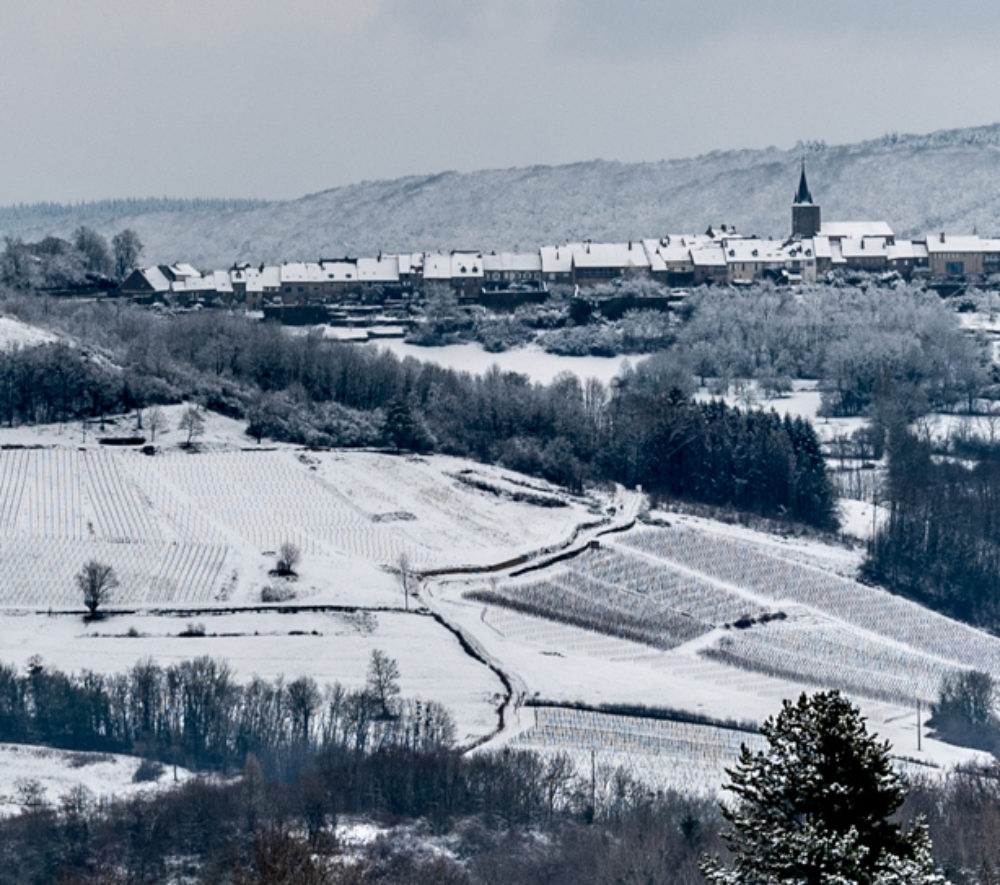3 main named slopes
1/ Les Gauthières
A slope located to the south of the village
In the Val de Sorne steephead valley
(south-east, south and south-west exposure)
The geology here is exceptional!
At the top are sandstone-limestones of the Sinemurian which are rich in Gryphaea and other fossils (from the Lias period). Mid-slope are the sandstones and oily, black shales and marls of the Rhetian, alongside variegated or speckled marls (from the Triassic).
Below are predominantly iridescent Triassic marls (Keuper).
Little by little, we have been able to purchase the various plots of this magnificent hillside. Belonging to a former monastic property, these vineyards were abandoned after the First World War due to difficult production conditions. The soils therefore boast the advantage of never having received any chemical inputs!
The new plantations were mainly Savagnin and Trousseau in the middle and at the top of the slope, since the conditions here are very favourable for these two local grape varieties. The lower part of the slope has been planted with Chardonnay to produce part of our Crémants.
For several years, we have been working to shape this magnificent hillside by recreating the plots of the past, re-establishing old drains and painstakingly rebuilding the ancient dry stone walls.
Scattered amonst the vines we also plant a large number of fruit trees which flourish in the region (mirabelle plums, plums, pears, apples…), as well as willows. We take care to respect the embankments and grassy strips surrounding the vines, and install nesting boxes for local birds and bats in order to encourage a return to the natural biodiversity present a century ago.
The land adjacent to this slope, acquired to protect our vineyard from any risk of pollution, is rented out and reserved for local farmers who pasture Montbéliard cows and horses there.
Anyone rambling along the GR59 footpath route passes through this plot, alongside a long, recently-renovated dry stone wall, and can stop to rest and admire the old tiled washhouse built in the 13th century for the inhabitants of Montaigu who gathered there twice a year to wash their sheets. The origin of the spring that continuously feeds the fountain, even in the driest periods, remains a mystery to this day.
2/ Behind the village
Slope located at the foot of the village
(southern exposure)
Located below the southern ramparts, which are visible remains of the village’s former fortifications, this plot is one of our family’s historic possessions, though it covers less than one and a half acres (55 ares). It is the smallest plot in our estate.
The upper part of it is on marl limestone and the lower part on loamy colluvial deposits. The whole is covered by limestone debris, chert and siliceous debris. It is exceptionally well drained, and the hill protects the vines from the north winds. Trousseau thrives in ideal conditions here.
3/ En Boivin
Val de Vallière steephead valley
(east, north-east exposure)
At the top of the slope are marly limestones mixed with Bajocian scree. This spot is ideal for producing our Crémants which draw finesse, elegance and minerality from the terroir. In the middle and at the lower end of the slope the soil is clay and silt, the ideal combination for the Chardonnay and White Gamay varieties.
This is also where the estate’s most historic vineyard is located. Its soil composed of mica-rich marls from the Lias, clayey marls so heavy that they are exhausting to dig, gives us the estate’s emblematic cuvée “Cellier des Chartreux” (Chardonnay matured under a veil of yeast).

